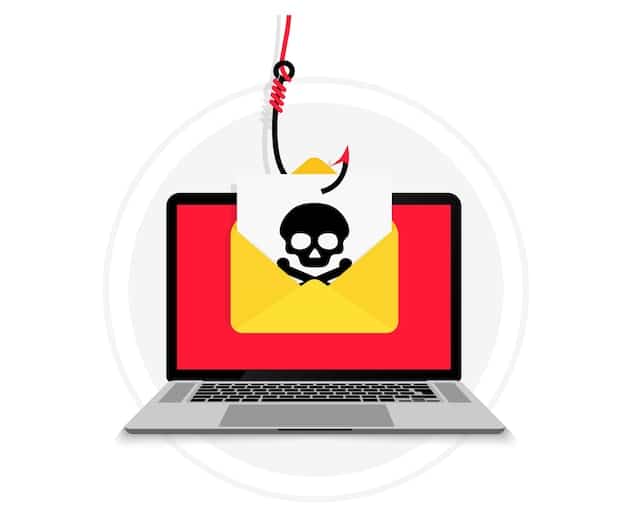Understanding Crypto Ransomware and How to Stay Safe

Understanding crypto ransomware involves recognizing the threat, implementing proactive security measures, and having a solid recovery plan to protect your data and minimize potential damage from attacks.
In today’s digital landscape, threats to our data are constantly evolving, with understanding crypto ransomware becoming increasingly critical for individuals and organizations alike. This article explores the nature of crypto ransomware, providing actionable strategies to protect yourself and recover your data should an attack occur.
What is Crypto Ransomware?
Crypto ransomware is a type of malware that encrypts a victim’s files, making them inaccessible until a ransom is paid. Understanding crypto ransomware begins with recognizing how it differs from other types of malware and the specific damage it can inflict.
How Crypto Ransomware Works
Crypto ransomware typically infiltrates systems through phishing emails, malicious websites, or infected software. Once inside, it encrypts files, making them unusable.
Impact on Individuals and Businesses
The impact of crypto ransomware can be devastating, leading to data loss, financial costs, and reputational damage for both individuals and businesses.

Crypto ransomware represents a significant threat because:
- It can encrypt a wide range of file types, including documents, photos, and videos.
- The ransom demanded can range from a few hundred to thousands of dollars, often payable in cryptocurrency.
- Even if the ransom is paid, there’s no guarantee that the files will be recovered.
In conclusion, understanding the mechanics and impact of crypto ransomware is vital for developing effective defense strategies.
Common Crypto Ransomware Attack Vectors
To safeguard against crypto ransomware, it is essential to identify the common attack vectors. Understanding crypto ransomware attack vectors enables individuals and organizations to implement targeted security measures.
Phishing Emails
Phishing emails are one of the most common ways crypto ransomware is spread. These emails often contain malicious attachments or links that, when clicked, download and install the ransomware.
Malicious Websites
Visiting compromised or malicious websites can also lead to crypto ransomware infections. These sites may contain exploit kits that automatically download and install malware on visitors’ computers.
Infected Software
Downloading software from unofficial sources or using outdated software can increase the risk of crypto ransomware infections. Malicious actors often bundle ransomware with legitimate-looking software or exploit vulnerabilities in older programs.
Common vulnerabilities include:
- Unpatched software vulnerabilities
- Weak passwords
- Lack of employee training on security best practices
Recognizing these vectors allows for the implementation of preventive strategies, thereby reducing the risk of a successful attack.
Proactive Measures to Protect Yourself
Protecting against crypto ransomware requires a proactive approach that includes a combination of technical and behavioral measures. By understanding crypto ransomware protection, you significantly reduce your risk.
Install and Maintain Antivirus Software
A robust antivirus solution can detect and block known crypto ransomware threats. Ensure that your antivirus software is always up to date to protect against the latest malware variants.
Keep Software Updated
Regularly updating your operating system and applications patches security vulnerabilities that crypto ransomware can exploit.
Use Strong, Unique Passwords
Strong, unique passwords make it more difficult for attackers to gain access to your systems. Use a password manager to generate and store complex passwords.

Implement Multi-Factor Authentication (MFA)
MFA adds an extra layer of security by requiring a second form of verification, such as a code sent to your phone, in addition to your password.
Effective protection strategies include:
- Regularly backing up your data to an external drive or cloud service.
- Training employees to recognize and avoid phishing emails.
- Implementing network segmentation to limit the spread of ransomware.
Taking these proactive measures strengthens your defenses and reduces the likelihood of a successful ransomware attack.
Creating a Data Backup and Recovery Plan
Even with proactive measures in place, it’s important to have a solid data backup and recovery plan. Understanding crypto ransomware recovery means knowing how to restore your systems and data quickly and efficiently.
Regularly Back Up Your Data
Backing up your data is one of the most effective ways to recover from a crypto ransomware attack. Regularly back up important files to an external hard drive, a network location, or a cloud-based service.
Test Your Backups
It’s not enough to just back up your data; you also need to test your backups to ensure they can be restored successfully. Regularly test your backup and recovery procedures to identify and fix any issues.
Store Backups Offline
To protect your backups from being encrypted by ransomware, store them offline or in a secure, isolated location. This ensures that you have a clean copy of your data that can be used for recovery.
Critical components of a recovery plan include:
- Identifying critical systems and data that need to be restored first.
- Documenting the steps required to restore backups.
- Establishing communication channels to keep stakeholders informed during the recovery process.
A well-prepared backup and recovery plan can minimize downtime and data loss in the event of a crypto ransomware attack.
Responding to a Crypto Ransomware Attack
If you suspect a crypto ransomware attack, it’s crucial to act quickly and decisively. Understanding crypto ransomware response involves isolating the infected system and following a clear incident response plan.
Isolate the Infected System
Immediately disconnect the infected system from the network to prevent the ransomware from spreading to other devices. Disconnecting the system can contain the damage and limit the scope of the attack.
Identify the Type of Ransomware
Identifying the specific type of ransomware can help you find potential decryption tools or recovery solutions. Look for clues in the ransom note or encrypted file extensions.
Report the Incident
Report the incident to the appropriate authorities, such as law enforcement or a cybersecurity agency. Reporting the attack can help track down the perpetrators and prevent future attacks.
Key steps in incident response:
- Contacting a cybersecurity expert or incident response team.
- Preserving evidence for investigation.
- Notifying affected parties, such as customers or business partners.
A swift and coordinated response can minimize the damage caused by a crypto ransomware attack and speed up the recovery process.
Should You Pay the Ransom?
One of the most difficult decisions victims face is whether to pay the ransom. Understanding crypto ransomware payment implications is critical for making an informed choice.
Risks of Paying the Ransom
Paying the ransom does not guarantee that you will receive the decryption key. In some cases, attackers may take the money and not provide the key, or the key may not work properly. Additionally, paying the ransom can encourage future attacks.
Alternatives to Paying the Ransom
Before paying the ransom, explore alternative solutions, such as restoring from backups, using decryption tools, or seeking assistance from a cybersecurity expert.
Legal and Ethical Considerations
Paying the ransom may also have legal and ethical implications, especially if the attackers are linked to criminal organizations or sanctioned entities.
Factors to consider include:
- The value of the data and the cost of downtime.
- The likelihood of successful decryption.
- The potential for further attacks.
Ultimately, the decision of whether to pay the ransom is a personal one that should be made after carefully considering all the risks and alternatives.
| Key Point | Brief Description |
|---|---|
| 🛡️ Proactive Measures | Install antivirus, keep software updated, use strong passwords. |
| 💾 Data Backup | Regularly back up and test your data to ensure recoverability. |
| 🚨 Incident Response | Isolate infected systems and report incidents promptly. |
| 💰 Paying Ransom | Understand risks; explore alternatives like decryption tools. |
▼
Crypto ransomware is a type of malware that encrypts your files, rendering them inaccessible until you pay a ransom. It often spreads through phishing emails or infected downloads.
▼
Protect yourself by using strong passwords, keeping software updated, installing antivirus software, and being cautious of suspicious emails and websites.
▼
If infected, isolate the system from the network, identify the ransomware type, report the incident, and consider restoring from backups instead of paying the ransom.
▼
Paying the ransom is risky, as there’s no guarantee of file recovery. Explore alternatives like backups or decryption tools before considering payment.
▼
Back up your data regularly, preferably daily or weekly, depending on how frequently your data changes, to ensure minimal data loss in case of an attack.
Conclusion
Understanding crypto ransomware is essential for protecting your data and minimizing potential damage. By implementing proactive security measures, creating a solid backup and recovery plan, and knowing how to respond to an attack, you can significantly reduce your risk.





